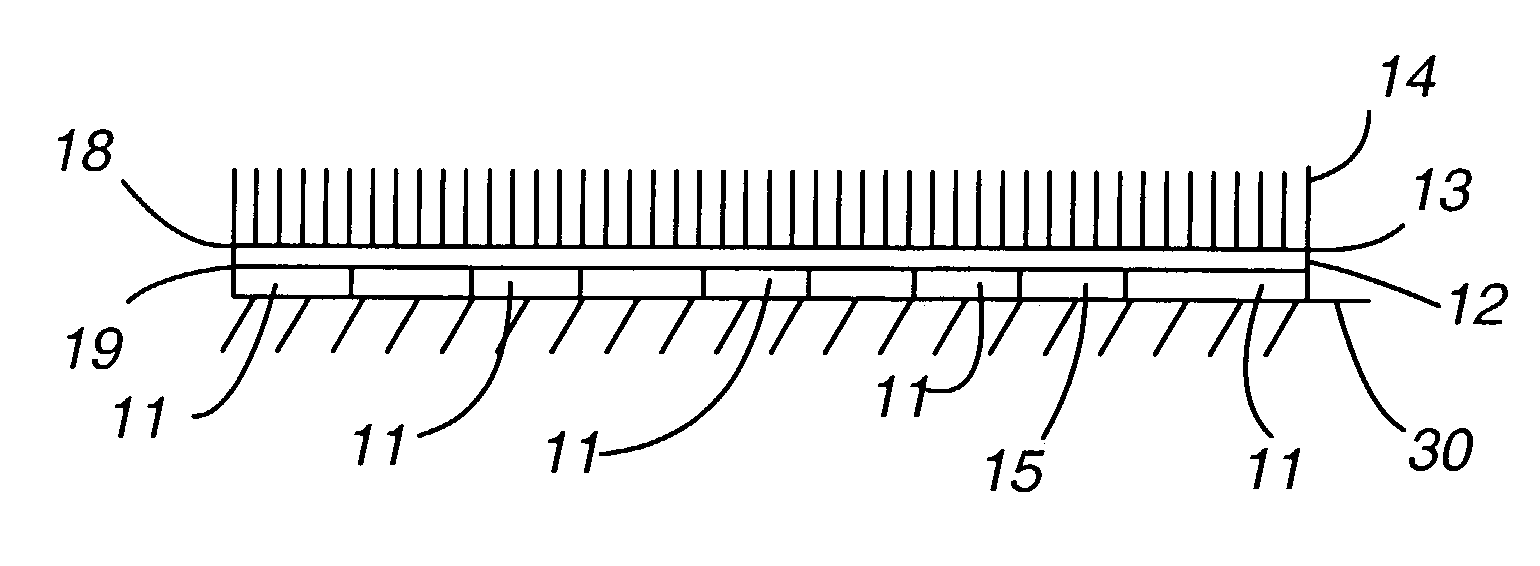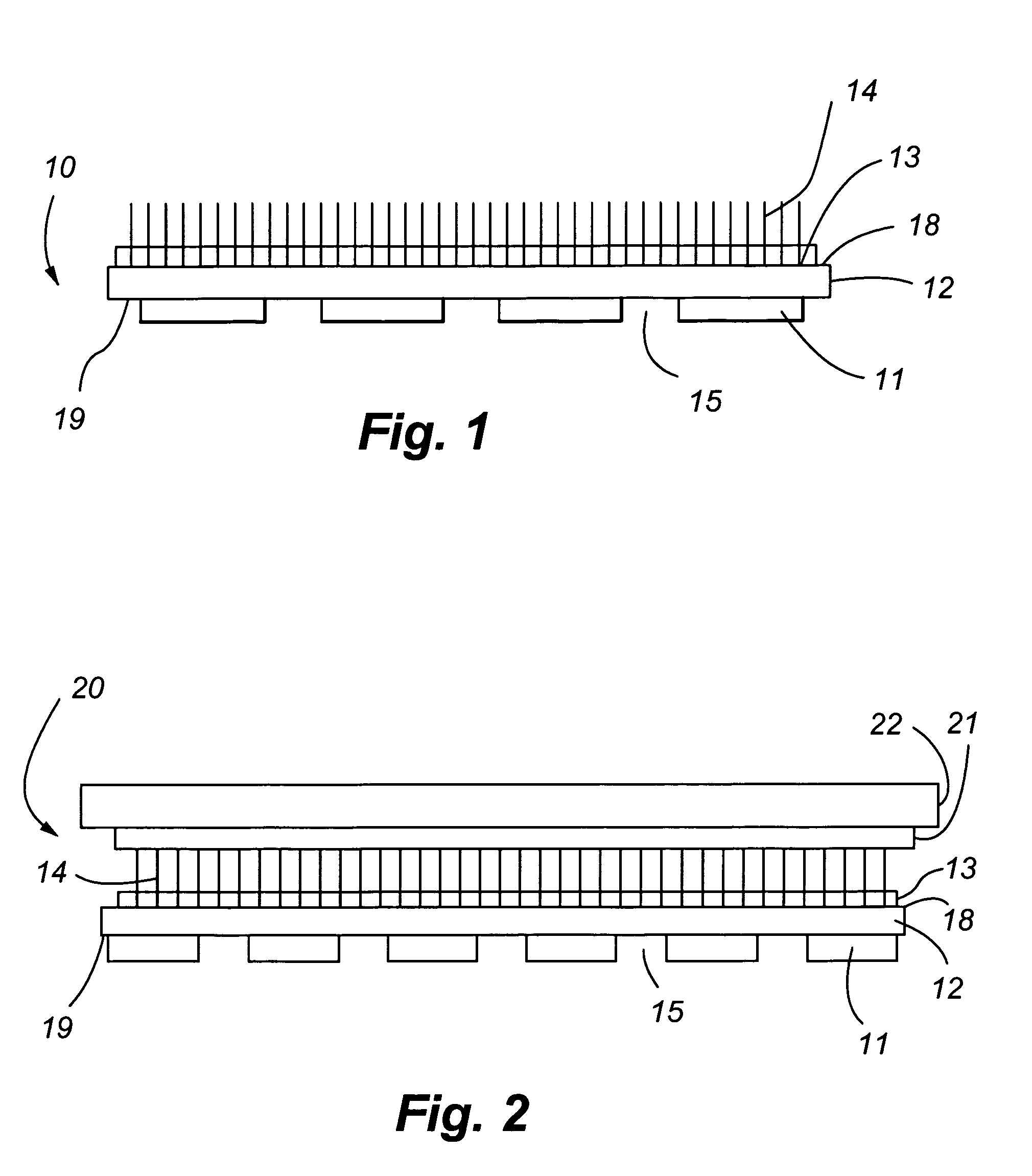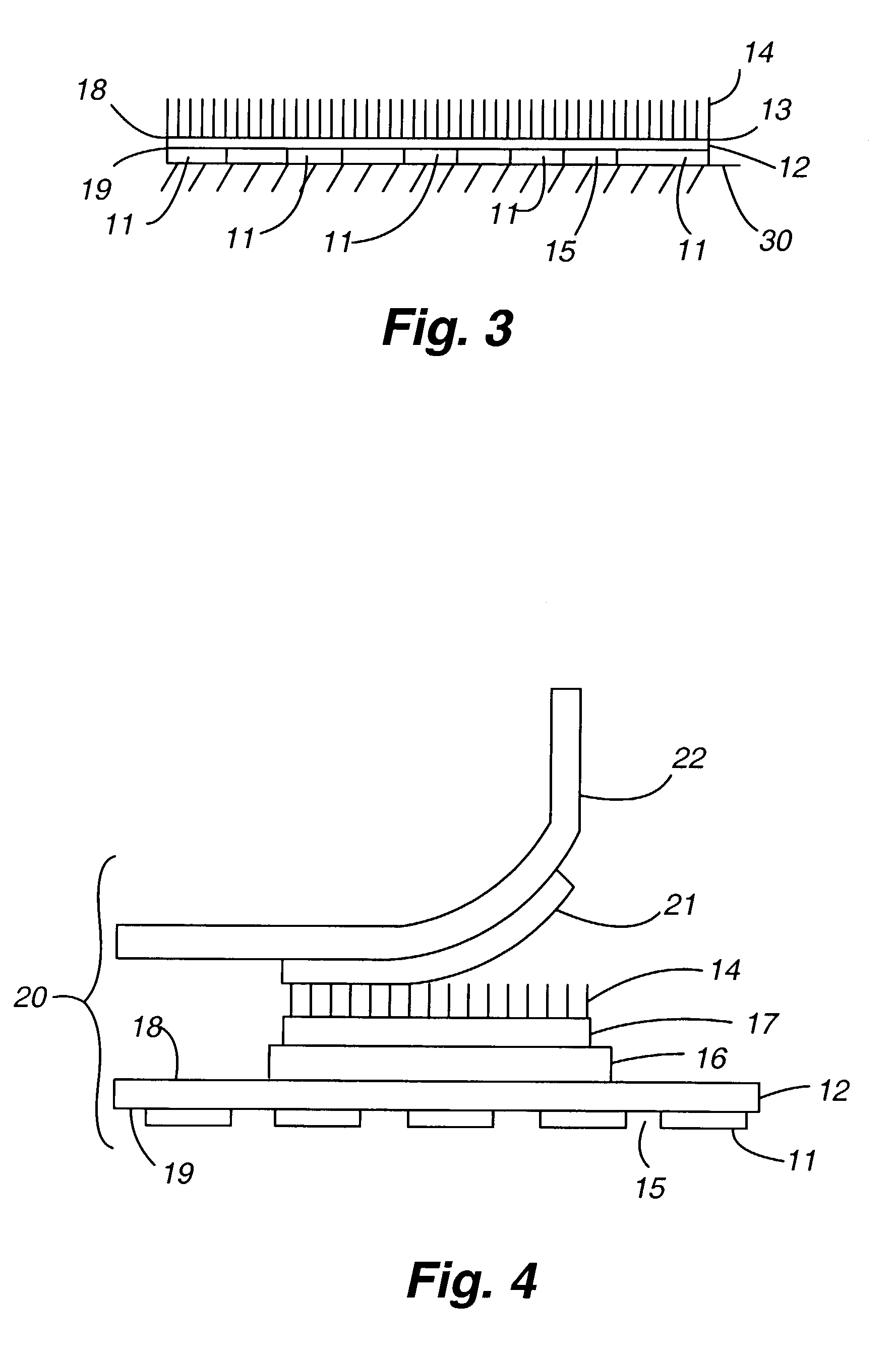Flocked stretchable design or transfer
a stretchable, design technology, applied in the field of transfer, can solve the problems of design, stretchable articles may not reform to their original size and shape, tend to permanently split or crack, etc., and achieve the effect of high elasticity and shape memory, and the preservation of aesthetic quality of the design
- Summary
- Abstract
- Description
- Claims
- Application Information
AI Technical Summary
Benefits of technology
Problems solved by technology
Method used
Image
Examples
Embodiment Construction
[0021]As shown in FIG. 1, a direct flocked design according to the present invention is shown. The design 10 has an elastic film 12, a first activatable (continuously distributed) adhesive layer 13 bonded to one side of the elastic film, a second activatable, discontinuously distributed, adhesive layer 11 that is applied to the other side of the elastic film, and a plurality of flock fibers 14 that are flocked onto the first activatable adhesive layer. The substantial elasticity imparted by the elastic film to the design 10 is shown in FIGS. 5 and 6. FIG. 5 depicts the design 10 in a non-stretched position while FIG. 6 depicts the design 10 in a fully stretched position.
[0022]The elastic film should be durable, thermally stable, and able to resist the various treatments including but not limited to flocking and / or lamination process, applying chemicals, washing, heating, drying, both during the flocking process and after the design or transfer has been heat applied to the article. T...
PUM
| Property | Measurement | Unit |
|---|---|---|
| elongation | aaaaa | aaaaa |
| thickness | aaaaa | aaaaa |
| thickness | aaaaa | aaaaa |
Abstract
Description
Claims
Application Information
 Login to View More
Login to View More - R&D
- Intellectual Property
- Life Sciences
- Materials
- Tech Scout
- Unparalleled Data Quality
- Higher Quality Content
- 60% Fewer Hallucinations
Browse by: Latest US Patents, China's latest patents, Technical Efficacy Thesaurus, Application Domain, Technology Topic, Popular Technical Reports.
© 2025 PatSnap. All rights reserved.Legal|Privacy policy|Modern Slavery Act Transparency Statement|Sitemap|About US| Contact US: help@patsnap.com



